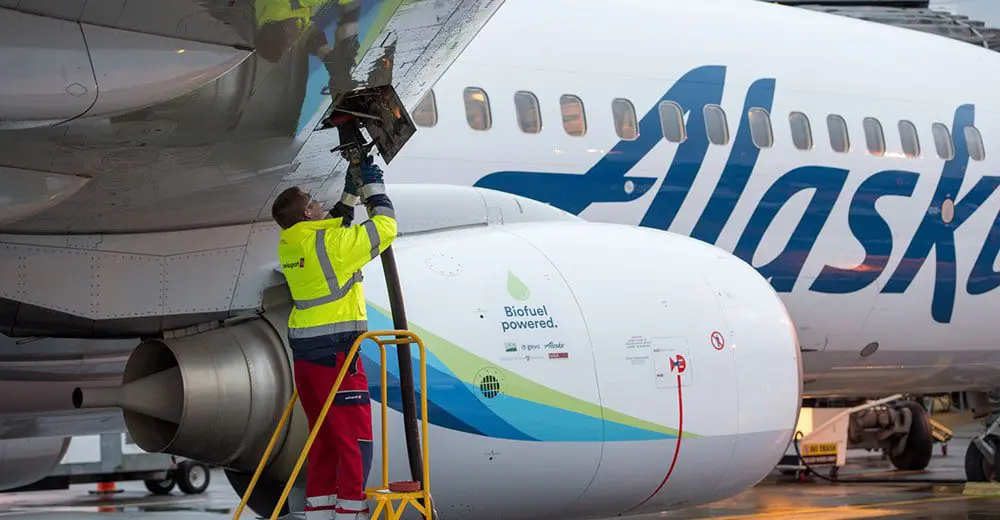Alaska Airlines has made aviation history recently after operating a cross-country flight partly fueled by the leftover limbs and branches from the harvesting of managed forests.
Money may not grow on trees, but biofuel does, and Alaska Airlines have demonstrated this recently on a flight from Seattle to Washington, D.C. that was powered with a 20 percent blend of sustainable aviation biofuel, becoming the first commercial airline EVER to power an aircraft with wood.
The alternative jet fuel, produced by the Northwest Advanced Renewables Alliance (NARA), was made from the leftover limbs, stumps and branches of a timber harvest or forest thinning of managed forests on private land in the Pacific Northwest.
Chemically speaking, the alternative biofuel is indistinguishable from regular jet fuel, according to the airline, and meets all the international safety standards to be used on commercial flights.

Source: https://blog.alaskaair.com
The flight, which made history on 14 November, marks an important milestone in the development of greener and more sustainable fuel sources for the aviation industry, which can ultimately help to reduce greenhouse gas emissions globally.
For example, in the case of Alaska Airlines, replacing one-fifth of its fuel demands with this new biofuel would ultimately reduce harmful greenhouse gas emissions by as much as 142,000 metric tons of CO2.
(FYI: if global air travel were considered a country, it would be the seventh biggest polluter in the world.)
“Using forest residuals for biofuel feedstock is exciting because it does not compete with food production; air pollution is cut by reducing slash pile burning; removal of residuals prepares the forest floor for replanting; and the new industry of woody biomass collection and conversion helps create jobs in rural economies. Also, forest residuals are abundant and can be sustainably supplied from private lands.”
Alaska Airlines, in a statement on its blog.
This wasn’t the first time Alaska Airlines made the headlines for its efforts towards making air travel greener. Earlier this year in June, the U.S. carrier operated two flights that were powered by a blend of biofuel produced from non-edible, sustainable corn.
EasyJet also recently made the news by unveiling a new eco-plane concept that would reduce its CO2 emissions. The new plane would save on fuel consumption by as much as four percent by installing a hydrogen fuel cell in its fleet that would capture energy from the aircraft brakes during landing.






